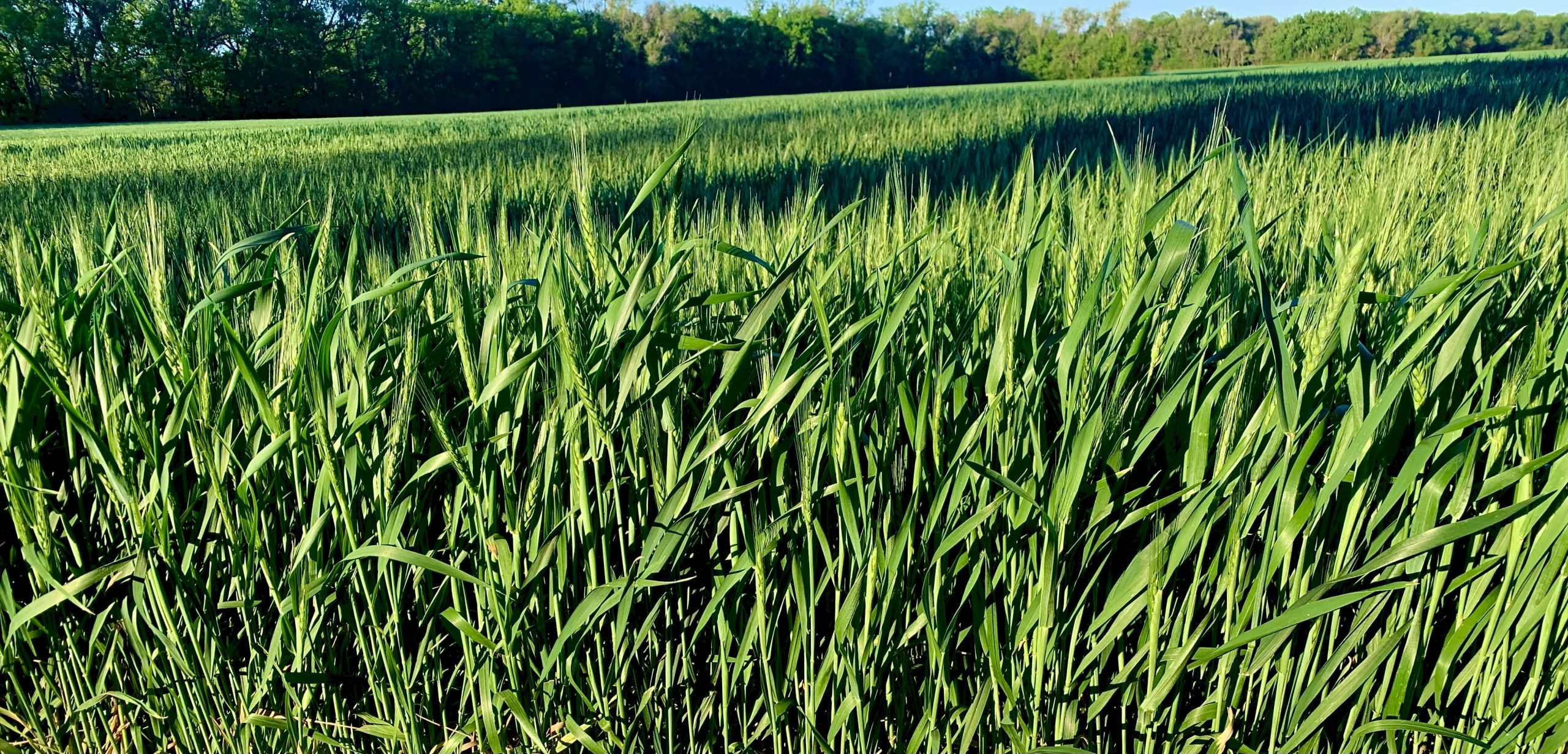Conditions can change quickly in the wheat fields of Kansas.
Rewind to the white Christmas of 2023 when Saline County posted 1.53 inches of moisture during December. Standing water and ice graced the greening landscape just after New Year’s Day, and by the state’s birthday on Jan. 29, patches of snow were everywhere.
But when tax day arrived in mid-April, wheat crop conditions in Kansas ranged generally from hopeful to doubtful.
“A month ago, I had high expectations for this crop. My optimism has diminished immensely,” wrote Gary Jorgensen, a seed salesman from Alliance Ag & Grain of Spearville, Kansas, in an April 16 email to a friend.
“Oh there are good fields. Some look great,” he continued. “Yet, with the growth they have and no significant rain in the forecast, it’s only a matter of time. We all hurt to see someone suffer and succumb to a slow, but inevitable, death. That’s how I’m feeling about this crop.”
Making it worse, Jorgensen added that he is seeing some fields with evidence of barley yellow dwarf and wheat streak mosaic viruses.
Crop ratings plummeted as conditions became more dusty.
“This isn’t a pessimistic outlook from me, but a realistic observation,” Jorgensen wrote.
As April came to a windy and stormy end, the prognosis only changed in places lucky enough to receive a proper spring drenching, such as a number of southeast Kansas cities being placed in flood warnings on the 27th and parts of Clay County that were gifted with 3 to 4 inches of rain.
“That would’ve been great around here,” said Jason Gans, who farms in southern Ottawa County with his father, Billy, and brother, Jacob Gans.
“It’s still bone dry,” he said. “You could track a person in the dust. We got just a sprinkle, maybe 10 to 15 hundredths. Friday it was 35 of 40 hundredths, but it was dry by noon,” he said Sunday, April 28. “The wheat’s still hanging in there, but it needs a long drink. That wheat’s pretty dang resilient.”
Fields most everywhere else have the blues, a common description for an outbreak of chronic thirst.
“My kids have a 4-H wheat plot near U.S. (Highway) 24 and U.S. 81 (in Cloud County),” said Jay Wisbey, agricultural Extension agent for Saline and Ottawa counties. “We got an inch and a half there late last week, but we still have cracks in the soil. When we got that rain, most of Ottawa County got less than three quarters, some less than a half inch.

“It’s worse out west, said Vance Ehmke, a farmer and seed dealer in Amy, near the Lane and Scott county line.
“There’s some good wheat around, but it’s getting worse,” he said. “April is normally our wettest month of the year, and we got absolutely nothing. North Lane and north Ness (counties) are really, really bad.”
Even with moisture, the crop is beyond much repair.
“Two inches of rain wouldn’t do it a bit of good; maybe increase yield one to two bushels (an acre), up to three or four,” Ehmke said. “The die has been cast.”
Photos submitted for this report are telling. One scene of a lush field roughly a mile north of Interstate Highway 70 on Old Highway 81 shows healthy plants with wheat heads rising above the foliage.
Sign up for HPJ Insights
Our weekly newsletter delivers the latest news straight to your inbox including breaking news, our exclusive columns and much more.
“We’ve got a whole variety of wheat fields, some better than others, where they’ve had more moisture,” Wisbey said. “There is some great looking wheat, but even that field’s gonna need rain. We haven’t gotten enough yet.”
Forecasts have provided decent chances for precipitation every seven to 10 days in north-central Kansas. Case in point was that on May 2, the online Weather Underground posted a 70% chance for rain in Minneapolis, Kansas, and an 80% chance for Glasco in Cloud County.
Rain is crucial, the Extension agent said, especially for farm and ranch ponds.
“We need every rain that can come through at this point,” Wisbey said. “There is not a farmer around who is going to complain about rain.”
In Lane County, “Eighty percent of the wheat looks fine for now, and 20% looks terrible,” said Louise Ehmke, Vance’s wife.
The wheat price rallied about 60 cents a bushel as April wrapped up.
“It’s a little better; still kind of discouraging,” Gans said.
As the Monday, April 29, markets neared closing, the price bounced from $6.26 to $6.31 a bushel at grain terminals in Salina, while the country elevator price at Delphos Co-op was from $6.10 to $6.11.
“It’s still more than two dollars a bushel less than a year ago at this time (2023 new crop wheat price: $8.50 a bushel),” Wisbey said. “Price always matters, but if you don’t get any rain, you don’t get any bushels.”
Tim Unruh can be reached at [email protected].




